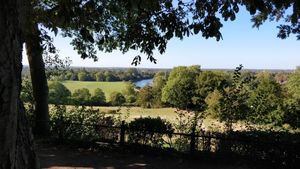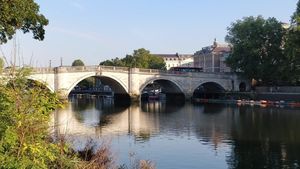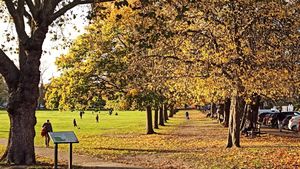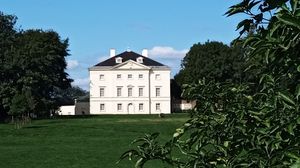
Richmond Park is the largest of London's Royal Parks, encompassing an impressive area of nearly 2,500 acres. It offers a diverse natural environment, featuring ancient woodlands, grasslands, and ponds, making it a haven for wildlife enthusiasts and nature lovers. This park is not just a green refuge but a historical one too, dating back to the 17th century when it was created by Charles I as a deer park.
The park is renowned for its free-roaming deer herds, with around 630 Red and Fallow deer that have been living in the park since it was enclosed. Their presence adds to the park's picturesque and serene atmosphere, making it a unique natural spectacle in London. Visitors are often captivated by the sight of these majestic creatures grazing freely in such close proximity to the city.
Richmond Park is also a site of special scientific interest and a National Nature Reserve. It contains several ecologically important habitats, including acid grassland and an ecological haven providing refuge for a range of wildlife, from woodpeckers to rare species of beetle. Its diverse flora and fauna make it an outstanding location for nature observation and leisurely exploration.
For those with a penchant for horticulture, the Isabella Plantation, located within the park, is a captivating woodland garden that has been cultivated with a wide variety of exotic plants. It is particularly famous for its stunning displays of azaleas and rhododendrons in spring, drawing visitors from all over the UK and beyond.
Richmond Park is an incredible vantage point for panoramic views over London. One of its most iconic viewpoints, King Henry's Mound, offers a protected vista that stretches all the way across to St. Paul's Cathedral in the heart of the city. This ancient mound is believed to date back to prehistoric times, adding a layer of historical intrigue to the breathtaking scenery.
The park has also played a role in the lives of many historical figures. It served as a military training ground during both World Wars and was visited frequently by literary icons such as Virginia Woolf, who found inspiration in its tranquil landscapes. Such stories add to the tapestry of London's history that Richmond Park is an integral part of.

Making the Most of Your Visit:
Arrive early in the morning, especially on weekends, to enjoy the tranquility and increase your chances of spotting deer. The park is most peaceful at these times, and you'll have a better opportunity to see the wildlife as it's waking up for the day.
If you're visiting with kids or enjoy birdwatching, bring a pair of binoculars. The park is full of birdlife, and you might just spot a green woodpecker or kingfisher around the pond areas. It's a fun addition to your day, especially for budding young ornithologists.
Pack a picnic as the park is expansive and there are numerous scenic spots to enjoy a quiet meal amidst nature. There's nothing quite like sitting on a blanket under an ancient oak tree with the deer grazing nearby.
Explore the lesser-known side trails and paths such as the ones leading to Pen Ponds or through the quieter parts of the park. These paths offer a more secluded experience and can sometimes reveal hidden gems like a picturesque pond or a serene patch of woodland.
If you're a history buff, don't miss the ancient oaks, some of which are hundreds of years old. These trees predate the park itself and offer a real sense of stepping back in time. Look out for preserved plaques that often accompany these venerable giants, adding an educational element to your walk.

Visiting Times & Costs:
Richmond Park is open to the public year-round, providing a fantastic retreat into nature no matter the season. The park is accessible every day from 7:00 AM in the summer to dusk and 7:30 AM in the winter to dusk, ensuring ample time for visitors to explore its vast beauty.
Entrance to Richmond Park is completely free of charge, making it an excellent option for visitors looking to enjoy a cost-free day out in one of London's most beautiful natural spaces.
With regard to accessibility, Richmond Park is reasonably accommodating to those with mobility challenges. While much of the park consists of natural terrain, certain paths and trails, such as the paths around the Isabella Plantation and Pembroke Lodge, are accessible to visitors using wheelchairs or with limited mobility. However, visitors should be aware that the uneven ground and some steep paths might present challenges in less accessible parts of the park.

Address & Map:

Nearby:























